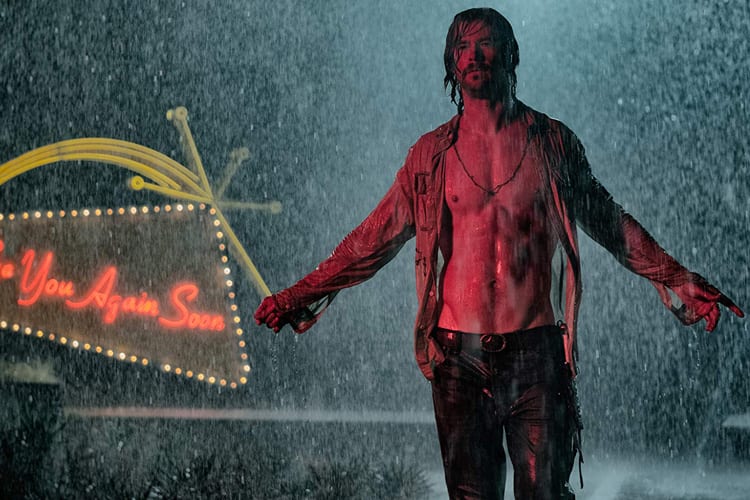Drew Goddard has been bending minds since his career began. He started out by writing episodes for influential classics like “Buffy the Vampire Slayer”, “Alias”, and “Lost” — genre-defying is in his bones. Goddard’s directorial debut, the bloody brilliant “The Cabin in the Woods”, was the pinnacle of his subversive style: it deconstructed the horror genre, riffed on its tropes as they lay bare, and lovingly embodied its most fun elements. Goddard’s second effort “Bad Times at the El Royale” seeks to do the same with the film noir. Does his hotel reach the same heights as his cabin?
Its cast of characters is certainly more high profile. When “The Cabin in the Woods” was released, Chris Hemsworth was the most recognizable name among the main cast—in “Bad Times at the El Royale”, he’s just another famous face. His suave cult leader Billy Lee isn’t even one of the hotel’s original guests. No, the names on the hotel’s ledger could only be found in the movie’s late 60s setting: there’s Father Flynn, a Catholic priest with an absent mind; Darlene Sweet, a struggling soul singer; Seymour Sullivan, a salesman with an enthusiasm for vacuums; and Emily Summerspring, a cagey Southerner with an attitude. Problem is, none of these guests showed up for a simple night’s sleep. Who could they really be?
In reality, we know exactly who they are: they’re Jeff Bridges, Cynthia Erivo, Jon Hamm, and Dakota Johnson, and they’re having a hell of a good time. Drew Goddard’s screenplay is full of twists, turns, and duplicitous characters, ensuring that each actor gets to play with multiple sides of their roles as their secrets are revealed. No performance is overshadowed because they’re all so dynamic and fun—but if cast champions had to be chosen, it’s the newcomers that stand out among the crowd. Lewis Pullman excels as a neurotic concierge; Cynthia Erivo, better known on Broadway and the West End, sings and acts her talented heart out.
Drew Goddard’s direction, paired with the clear-eyed cinematography of Seamus McGarvey, is just as sweet a treat. “Bad Times at the El Royale” is exceptionally shot. There are deliciously fluid long takes that keep your pulse pounding until you’re begging for a cut. And Goddard knows just when to pull the trigger: he’s an expert at visual setup, and his methodical mise en scène builds tension to explosive ends. The movie understands that violence is effective not because it’s excessive, but because of how it can pierce the peace that preceded it.
All this tension, violence, and mystery make for a gleefully entertaining neo-noir. “Bad Times at the El Royale” is colorful, pulpy, and structured to keep viewers on their toes without keeping them in the dark—it drops clues slyly enough to let you piece puzzles together yourself, though a couple mysteries are too easily solved.
The movie is most disappointingly simple in its subtext. Goddard’s screenplay consistently returns to each character’s view of God, and never in subtle ways. There’s clearly an interest in a thematic message with religious import. The set design of the El Royale is full of related symbols, namely the state line between California and Nevada that splits the hotel down the middle. When characters start to speak about the afterlife, it’s not hard to see where the movie could go with its religious themes and symbolism—and it goes exactly where you’d expect, but no further. The culmination of the movie’s religious ideas is too little, too late, and too cliché.
But regardless of its failure to say anything of significance, “Bad Times at the El Royale” is still a slick, thrilling slice of noir. It boasts a perfect 60s-era soundtrack as well. Goddard may not have another subversive chef-d’oeuvre to serve, but a stint at the El Royale is guaranteed to be a great time.
★★★★ (4/5)




